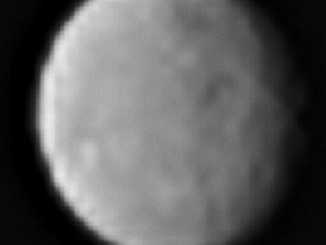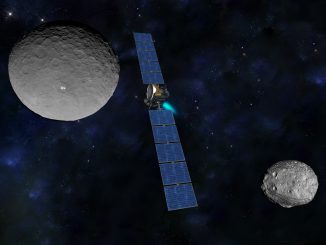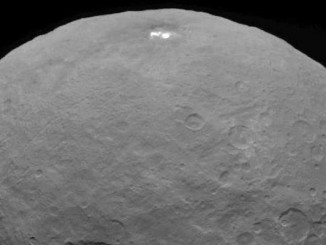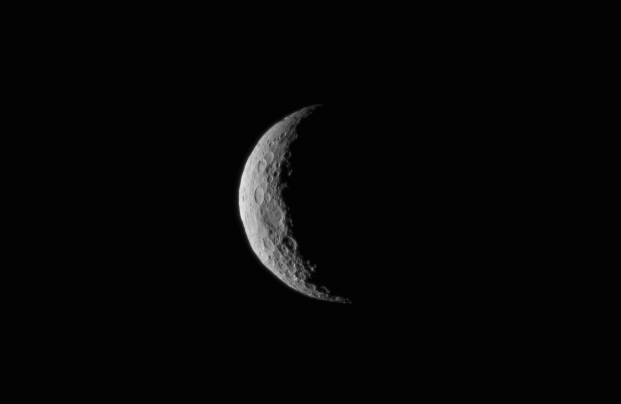
NASA’s Dawn spacecraft slipped into orbit around the dwarf planet Ceres on Friday, ready to examine the largest unexplored world in the inner solar system after traveling 3.1 billion miles from Earth.
The gravitational tug of Ceres grasped the solar-powered space probe at 7:39 a.m. EST (1239 GMT) Friday, pulling Dawn into a preliminary orbit that will be reshaped over the coming weeks to place the spacecraft about 8,400 miles from the icy world.
Powered by xenon-fueled ion engines, Dawn will spend the next 16 months examining the composition and terrain of Ceres, which measures about 600 miles across — about the size of Texas.
It is the largest body in the asteroid belt between the orbits of Mars and Jupiter, and Ceres has long defied a clear-cut classification as a planet or asteroid. Most experts now agree it is a dwarf planet, a newly-named type of world that captures objects like Ceres and Pluto.
“Ceres was discovered in 1801, and it has beckoned for more than two centuries, and finally today Dawn answered that cosmic invitation,” said Marc Rayman, Dawn’s chief engineer and mission director at NASA’s Jet Propulsion Laboratory.
“It’s using its advanced ion propulsion system, which I actually first heard of in a Star Trek episode from the logical Mr. Spock,” Rayman said. “And using (ion engines), it’s flying a complex and elegant course into orbit that I think would be the envy of any crackerjack spaceship pilot.”
Leonard Nimoy, who played Spock in the Star Trek television series and films, died Feb. 27 at age 83.
Scientists think Ceres is covered in a crust of ice, and it may harbor an underground ocean and a rocky core. Ceres is roughly spherical in shape, and it is a leftover remnant from the chaotic early history of the solar system, when objects collided like billiard balls to form the planets.
Ceres is the second destination visited by Dawn, which spent a year studying asteroid Vesta after launching from Earth in September 2007. Built by Orbital ATK, Dawn carries three ion engines that enabled the probe to adjust its path around the sun more efficiently than if it relied on chemically-fueled rocket engines, making the two-for-one mission possible.
“This ion propulsion system is fantastically efficient — 10 times the efficiency of conventional chemical propulsion — but it’s also very gentle,” Rayman said, comparing its thrust to the force exerted by a piece of paper held in your hand. “The spacecraft has gradually, elegantly, and gracefully crept up on Ceres and slipped into orbit.”
Dawn’s arrival at Ceres is different from the high-speed make-or-break maneuvers required by probes entering orbit at planets like Mars using traditional rocket engines.
“We are really excited to be beginning this historic exploration of dwarf planet Ceres, which we also refer to a proto-planet,” said Carol Raymond, Dawn’s deputy principal investigator. We think of Ceres and Vesta as building blocks of the terrestrial planets, and they represent about 40 percent of the mass of the entire main asteroid belt.”
Dawn’s approach to Ceres revealed an alien world with craters and mysterious bright spots that scientists are eager to observe up-close over the coming months. The spots could be ice outcrops peeking out from dust on the surface or evidence of “cryovolcanism” — ice volcanoes — where geysers of water vapor could stream into space from an underground reservoir.
Europe’s Herschel space telescope detected a signature of water vapor around Ceres, and Dawn will follow up on the observations.
Scientists do not expect fresh images from Dawn until April because the spacecraft is now flying on the dark side of the dwarf planet, and the probe will extend its distance from Ceres before drawing closer again. Dawn’s ion engines — providing a near-constant impulse — will guide the spacecraft into a circular polar orbit around Ceres at an altitude of about 8,400 miles by April 23, Raymond said.
Dawn will move closer to Ceres in a series of mapping orbits over the next few months, eventually reaching its closest point to the mysterious world at a distance of about 230 miles.
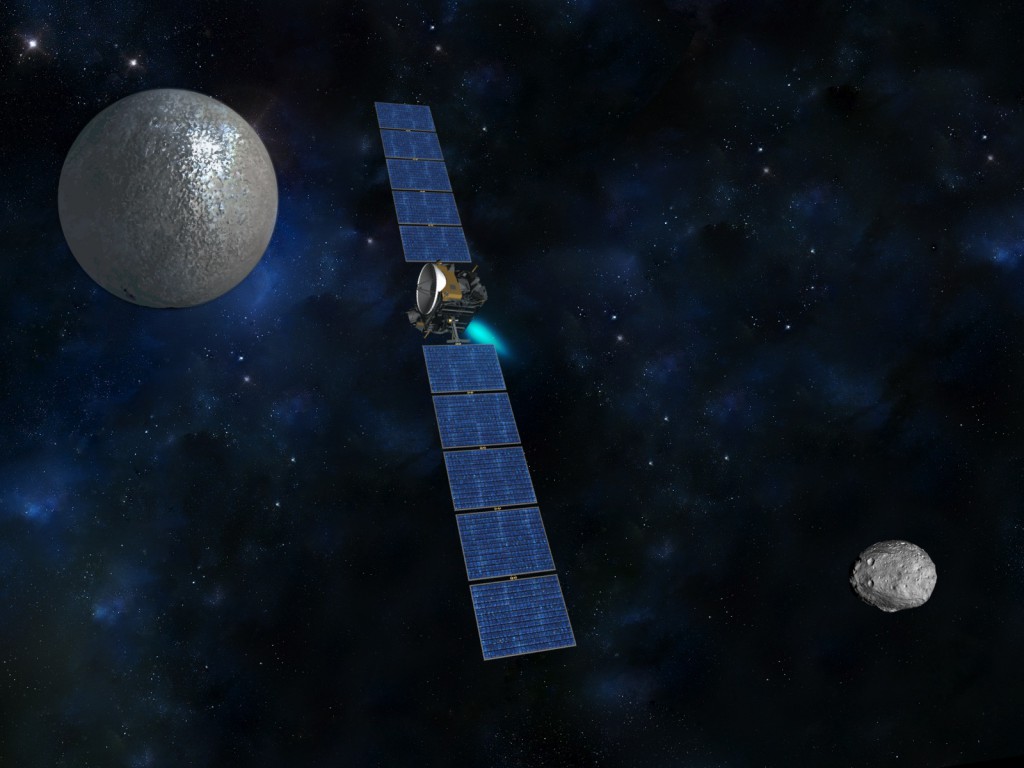
From that vantage point, Dawn’s German-built framing camera will be able to resolve features about the size of a basketball court.
Besides the camera, the probe carries a visible and infrared mapping spectrometer from Italian scientists to determine what minerals are on the surface of Ceres. The Los Alamos National Laboratory supplied a gamma ray and neutron detector learn what elements make up Ceres and look for signs of water ice.
Raymond told reporters Friday that scientists hope to learn from Dawn how Ceres evolved over the solar system’s 4.5-billion-year history.
“We think there was an ocaen on Ceres, based on the heat that would have been coming out of the interior, the current ice layer would have been liquid in the past,” Raymond said. “That warm ocean-rock interface is the type of environment that we recognize would have been conducive to life, so a habitable environment.
“We want to understand what Ceres was like in the past, so that we can answer these questions about its potential habitability, and how a body like Ceres formed and evolved over time, Raymond said.
“By the time we finish in mid-2016, we’re going to know Ceres in exquisite detail,” Raymond said. “We’re going to understand why it has very, very bright spots, which are unique to any body in the solar system that’s been explored thus far, and we’re going to understand what Ceres means in terms of a building block for planets in our solar system.”
Follow Stephen Clark on Twitter: @StephenClark1.

